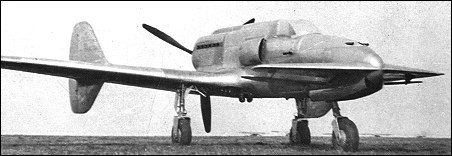In 1930s and 1940s (but not limited to) many companies were trying to design, manufacture and sell 'light fighters' - aircraft that will not be using latest engines, but that will rely on small size and weight in order to became performers. For many reasons, those designs rerely suceeded.
The task is here to 'design' fighters for the late 1930s/early 1940s, for each country & company historically capable of that, that will be using second- or even third-rate engines. Small stature, but still hopefully capable to provide good service. Armament, materials, technology and aerodynamics of the day to be used.
Engine power will be limited to 750 HP for up to year of 1939, 850 HP for 1940, 990 HP for 1941 and on. Just historical engines, up to two designs can be offered per country - on with liquid-cooled engine, another for air-cooled.
Armament of at least 4 LMGs, or 2 HMGs, or 1 cannon. Range/radius sufficient for current doctrine of the choosen air force/service.
The task is here to 'design' fighters for the late 1930s/early 1940s, for each country & company historically capable of that, that will be using second- or even third-rate engines. Small stature, but still hopefully capable to provide good service. Armament, materials, technology and aerodynamics of the day to be used.
Engine power will be limited to 750 HP for up to year of 1939, 850 HP for 1940, 990 HP for 1941 and on. Just historical engines, up to two designs can be offered per country - on with liquid-cooled engine, another for air-cooled.
Armament of at least 4 LMGs, or 2 HMGs, or 1 cannon. Range/radius sufficient for current doctrine of the choosen air force/service.


